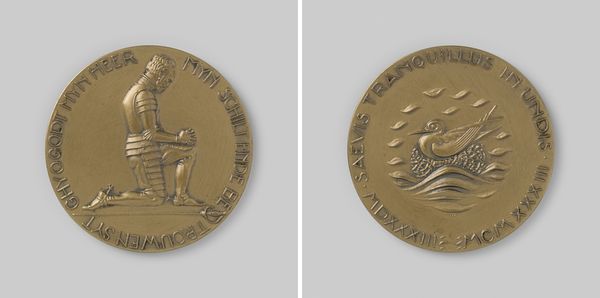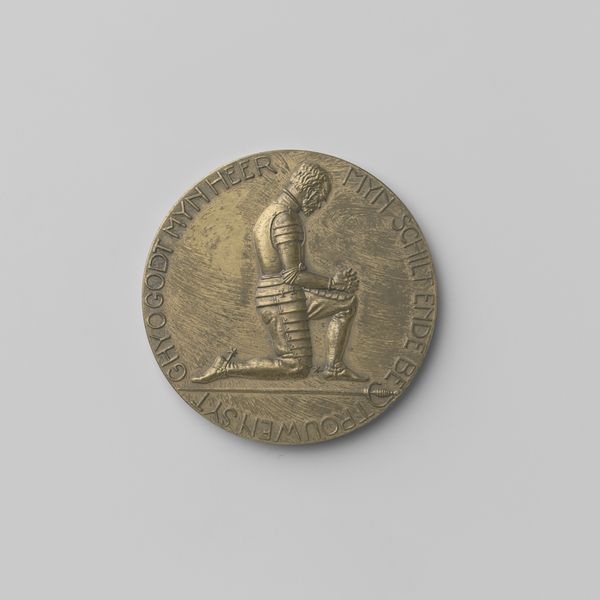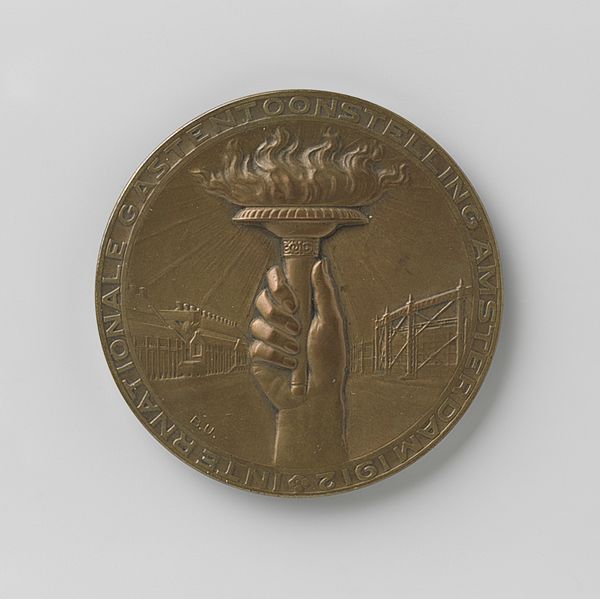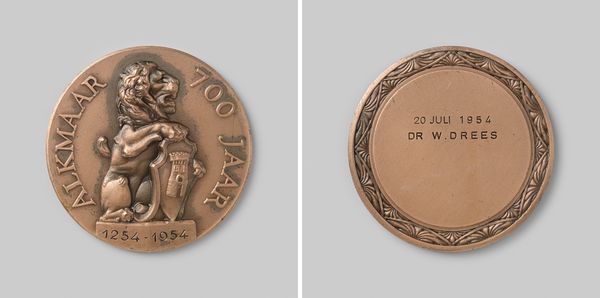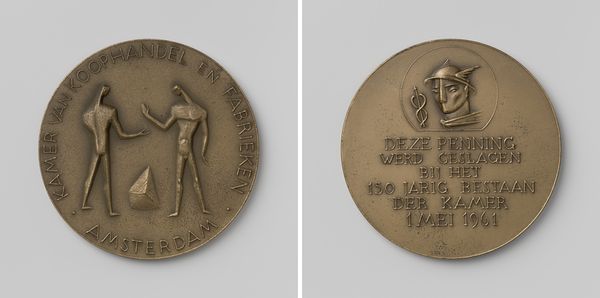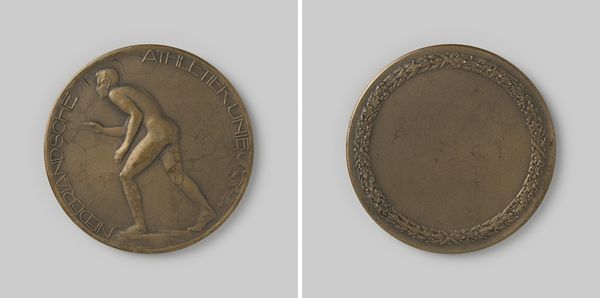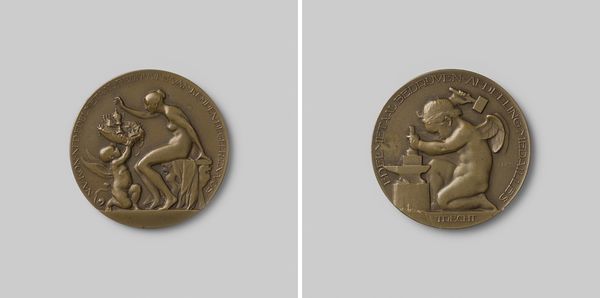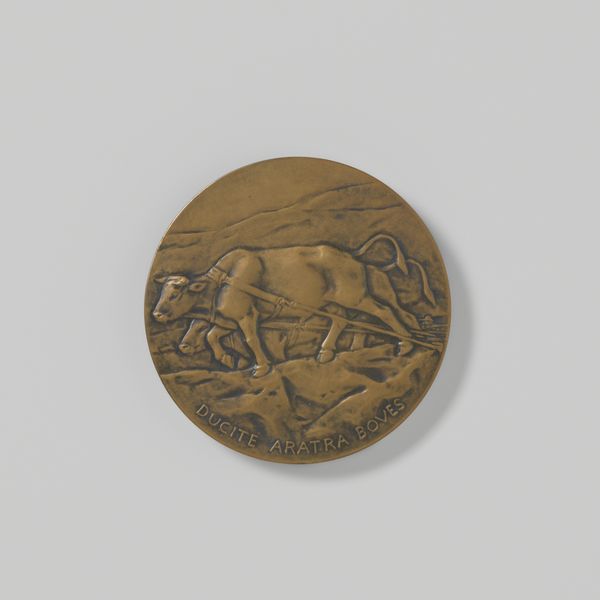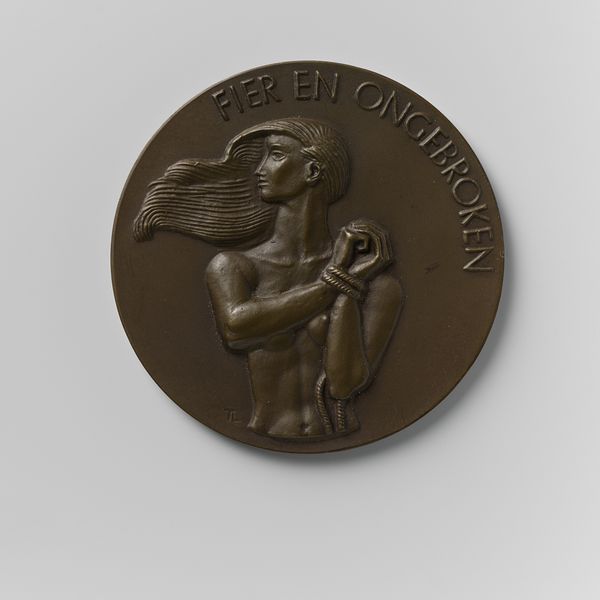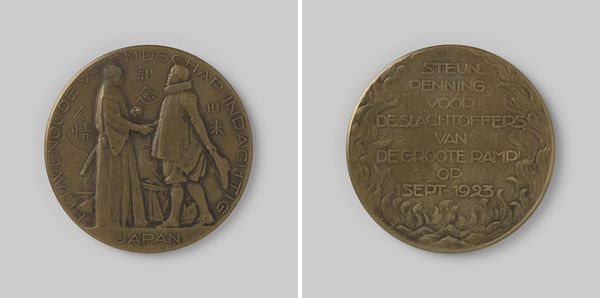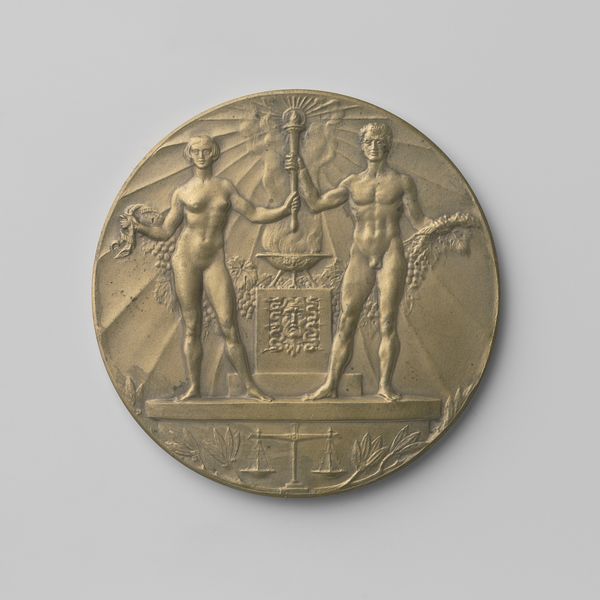
Dimensions: diameter 6.0 cm, weight 93.37 gr
Copyright: Rijks Museum: Open Domain
Curator: Here we have Oswald Wenckebach's bronze relief, "Centenary of Willem van Oranje’s Birth," created in 1933. My initial impression is its weighty solemnity. Editor: The figure kneeling, the sword, even the encircling text—they create an air of profound resignation. It almost feels as if the very material, the bronze, amplifies that. I'm immediately drawn to the way the artist has manipulated it to create texture. Curator: Indeed, bronze has historically represented resilience and authority, but here, I sense an interesting duality. While commemorating William of Orange, a figure associated with Dutch independence and defiance, the kneeling pose is suggestive of humility and submission to divine will. Note the inscription. Editor: You’re right, the surrounding text really anchors that idea; those old Dutch phrases become part of the symbol. What’s really striking is the juxtaposition of the armor – obviously made of iron, which is from the earth – against that smooth bronze backdrop. One's forged, the other cast; one speaks of immediate protection, the other a more enduring legacy. Curator: Precisely. That duality—of earthly defense and spiritual trust—is crucial. William of Orange faced immense political and military challenges, so representing him as reliant on both the tangible and the intangible speaks volumes about the collective memory surrounding him in the 1930s. A renewed desire for a leader maybe, or perhaps the feeling that the old leader gave them their legacy? Editor: So you're saying this image, in its time, serves more than a reminder of his life? Interesting. The way this piece was produced makes me wonder about who might have consumed the piece, who handled it, where it was placed... Curator: And the symbolism would resonate with anyone who handled this material, the coldness of the bronze against their hands; or the detail on the iron of the kneeling figure in all of his gear… Editor: There's a material tactility that evokes a very specific cultural moment of Dutch identity, doesn’t it? This piece transcends simple representation; the combination of form, materials, and subject intertwines to represent memory and loss. Curator: Ultimately, it speaks volumes, not just about William of Orange, but about the Netherlands' self-perception during a complex era. Editor: Absolutely. It encourages us to think more about the relationship between materiality, process, and historical narratives, a moment perfectly encapsulated by a timeless image.
Comments
No comments
Be the first to comment and join the conversation on the ultimate creative platform.
